The Role of Navigation Simulators in Collision Avoidance
Safety priorities in maritime operations have kept pace with changes in the industry. Concerns regarding vessel collisions have reached critical levels, especially with the increase in vessel traffic. In response to this, navigation simulators for collision avoidance have become essential in training mariners, testing navigation systems, and formulating strategies. These simulators offer the opportunity to practice a wide range of navigation and decision-making skills, situational awareness and traffic behavior of maritime systems in a risk-free environment.
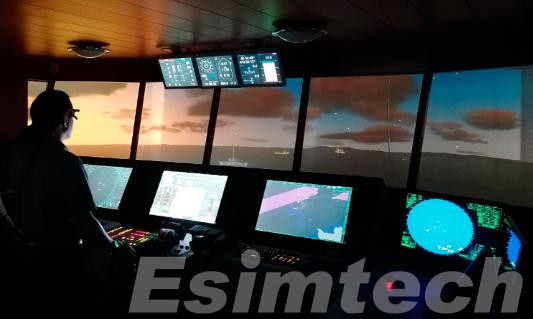
Understanding Navigation Simulators
Navigation simulators are advanced, computer-based systems designed to recreate realistic maritime environments, vessel behavior, and navigational challenges. They integrate real ship bridge equipment, radar, ECDIS (Electronic Chart Display and Information System), and Automatic Radar Plotting Aids (ARPA) to provide immersive, hands-on experiences.
Ship navigation simulators vary in complexity, from desktop systems for basic training to full-mission bridge simulators. These advanced systems replicate the physical layout and operational conditions of actual ship bridges. In all systems, the primary function of the simulators is to create safe and repeatable scenarios which allow navigators to develop the competencies needed for collision avoidance, route planning, and emergency management.
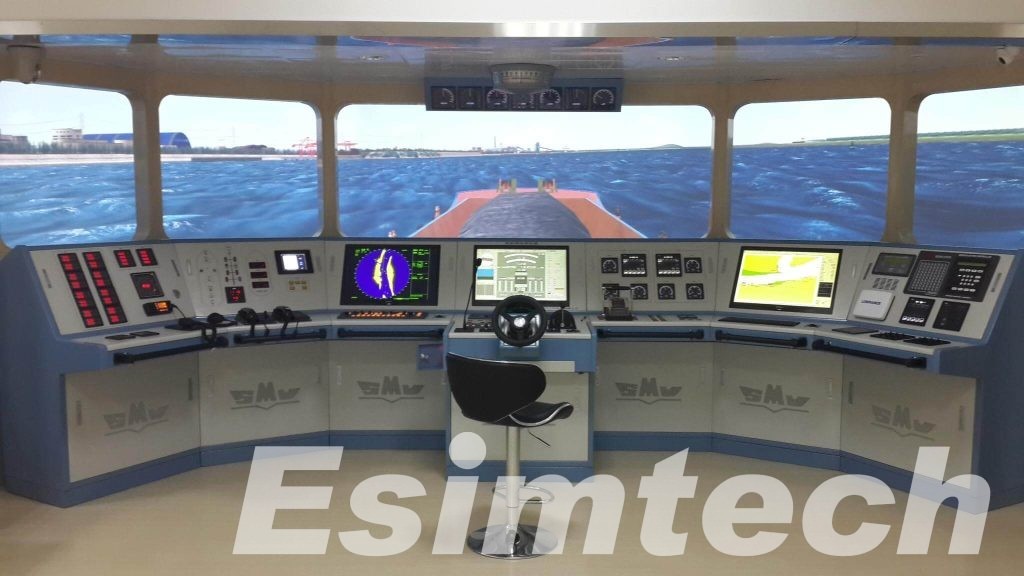
Key Features of Navigation Simulators for Collision Avoidance
| Feature | Description | Benefit to Collision Avoidance Training |
| Realistic 3D Environment | Simulates actual maritime surroundings with high-resolution visuals, sea states, and weather effects. | Enhances situational awareness and helps trainees practice maneuvers in lifelike conditions. |
| Hydrodynamic Vessel Modeling | Accurately replicates vessel behavior based on type, size, and load under different sea conditions. | Enables realistic handling and maneuvering exercises for effective collision prevention. |
| COLREGs Integration | Incorporates International Regulations for Preventing Collisions at Sea into training scenarios. | Reinforces regulatory compliance and improves decision-making during potential collision events. |
| Multi-Vessel Interaction | Allows simulation of traffic situations with multiple vessels and navigation patterns. | Trains mariners to assess risks, predict vessel movements, and apply avoidance strategies effectively. |
| Advanced Navigation Systems Simulation | Includes radar, AIS, ECDIS, GPS, and communication tools for a complete bridge setup. | Provides familiarity with navigation instruments and enhances data interpretation skills. |
| Adverse Weather and Visibility Simulation | Recreates challenging conditions like fog, rain, night operations, and rough seas. | Develops adaptability and confidence in maintaining safety during low-visibility operations. |
| Bridge Resource Management (BRM) Capability | Supports multi-operator training for communication and teamwork on the bridge. | Improves coordination, reduces human error, and promotes effective crew resource utilization. |
| Scenario Customization | Instructors can create tailored collision scenarios based on specific training goals or vessel types. | Ensures targeted skill development and flexibility in training content. |
| Performance Recording and Playback | Records all maneuvers and decisions for post-training debrief and analysis. | Allows detailed review, error identification, and continuous improvement of navigational skills. |
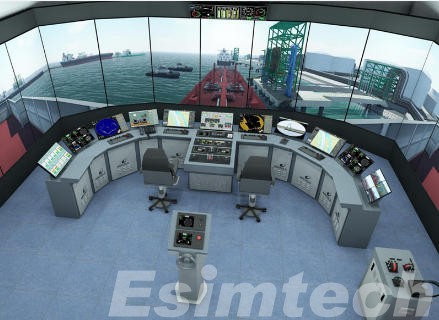
Key Applications of Navigation Simulators in Collision Avoidance
The applications of navigation simulators include everything from regulatory compliance to human performance evaluation, and not just simple maneuvering exercises.
1. Realistic Collision Scenarios
Navigation simulators serve as safe and repeatable environments where mariners can refine their techniques for avoiding collisions under an array of scenarios. Instructors applying the International Regulations for Preventing Collisions at Sea (COLREGs) and designing head-on, crossing, and overtaking scenarios. Trainees respond to vessel traffic, radar and AIS information, and split second navigational decisions. This application is essential for developing automatic, instinctive responses.
2. Training Under Adverse Environmental Conditions
Practical navigation includes unpredictable factors such as fog, strong currents, and restricted visibility. In simulators, these scenarios can and must be used. Training in environments where vessel control and situational awareness must be maintained under stress is critical. Simulators improve avoidance strategy and teach to adapt as conditions change. Confidence to handle intractable situations is critical and human error is costly in actual navigation.
3. Bridge Resource Management (BRM) and Team Coordination
The ability to avoid collisions relies on communication and cooperation just as much as on technical ability. Ship navigation simulators aid in the training of Bridge Resource Management (BRM) where entire bridge teams performing emergency simulations practice coordination, task allocation, and decision-making. These exercises enhance leadership and communication skills and situational awareness, enabling bridge teams to work together effectively as a unit to avoid collisions. The replication of multi-operator environments means that individual and team navigation skills will be developed in a positive manner for all participants.
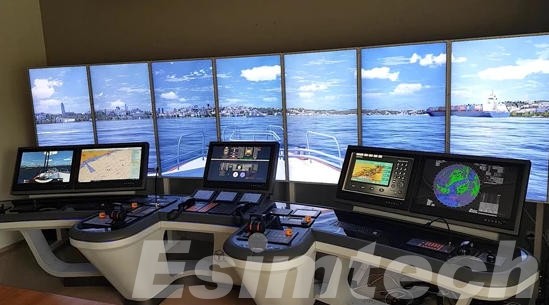
4. Integration with Modern Navigation Systems
The latest radars, the Electronic Chart Display and Information Systems (ECDIS), and the AIS (Automatic Identification System) are advanced modern systems used in vessels. These systems are used in navigation simulators and in scenarios for collision avoidance. The simulators teach users advanced systems in collision avoidance scenarios and how to use them in real time. The systems teach users how to analyze electronic data, follow and analyze targets, and find the potential risky areas for collisions. Simulation of advanced systems helps built confidence needed to ensure onboard tech is used efficiently during actual navigation.
5. Performance Evaluation and Error Analysis
One of the most important benefits offered by navigation simulators is the reliability and detail with which every training session is documented and every session analyzed for subsequent review. Records are kept of each communication, every movement, and each decision taken during the session. Instructors analyze these for post-exercise review. This analysis provides mariners insight into the outcomes of their choices, allowing for awareness and decision-making improvement. The ability to replay simulations to examine the responses taken makes collision avoidance training and assessment far more effective. This is especially useful in assessing the responses and reasoning used for incorrect and faulty decisions within the simulation.
6. Emergency Preparedness and Risk Management
The preparation of mariners to respond effectively to emergencies is fundamental within training navigation simulators. Internally programmed emergency training simulations focus on the instructor-defined objectives of controls and crisis, which encourage rapid assessment and decision-making. The ability to guide emergency scenarios in order to train active participants to respond to unanticipated and teachable vessel emergencies, encourage mariners to become more proficient in managing the reduction of pause and collision in real life. Emergency preparedness training greatly minimizes operational interruptions.
7. Research and Development in Collision Avoidance Systems
In addition to training, navigation simulators contribute to maritime research and innovation. As part of research, these simulators evaluate new collision avoidance strategies, test autonomous navigation systems, and assess human factors in maritime safety. Simulators create environments that enable the study of technology and human behavior in real operational situations, providing insights into technology and human behavior. These insights shape the design and development of intelligent, safe and efficient navigation systems.
8. Multi-Vessel and Port Traffic Management Training
To study the intricacies of port traffic and constrained waterways, navigation simulators can incorporate multiple vessels into one shared virtual setting. This application is valuable for collaborative training of bridge teams and traffic control officers, who assess the coordination of vessel movements and collision avoidance in restricted situations. These exercises foster communication on maritime traffic management between crew members onboard and shore operators. Coordination between teams and traffic management systems promotes efficient control of maritime traffic.
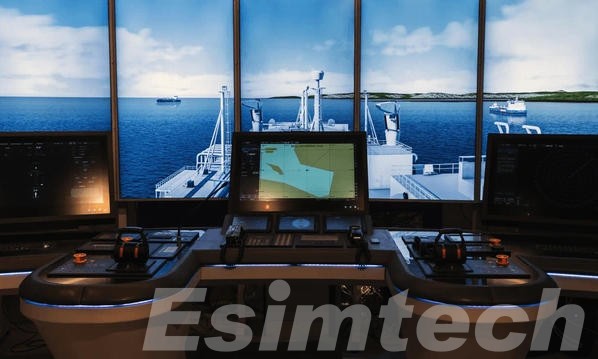
Future Trends in Navigation Simulation for Collision Avoidance
New navigation simulators will utilize artificial intelligence, immersive environments, and data systems to design integrated and self-regulating training systems.
- Integration of Artificial Intelligence
Over the last few years, the most notable advancement in navigation simulation technology has been the incorporation of artificial intelligence. AI-enabled simulators assess a training individual’s performance in real time and adapt training scenarios to align with their proficiency levels. For instance, if a trainee excels in calm conditions, the system will add sudden equipment failures or severe weather conditions to assess their responsiveness. AI also helps in training focus and identifying learning sequences so as to predict weak areas in collision avoidance and recommend exercises to build specific skills.
- Expansion of Immersive Technologies: VR and AR
The use of virtual reality (VR) and augmented reality (AR) technologies in maritime simulation is growing. VR and AR technology places trainees in realistic distant bridge environments, permitting them to freely manipulate the bridge instruments, and interface with other vessels and equipment. VR and AR technology significantly differ from traditional simulators and training techniques. This immersive training helps to build critical situational awareness and spatial perception as trainees acquire dexterity of 360-degree navigation. The technology fosters progression in training to meet the real-world navigation cognitive and sensory demands. The immersive training helps to build situational awareness and spatial perception as trainees acquire dexterity of 360-degree navigation. Digital navigation simulators will be able to incorporate training weather conditions as well.
- Integration with Digital Twins and Real-World Data
Digital twin technology is changing the way simulations are conducted in the maritime industry. Digital copies of ships, ports, and routes can be made and used for trainees to practice navigation in environments that are the same as their operational. For digital twins, real-time data from sensors, AIS, and weather systems are used to adjust traffic and environmental conditions accurately to provide simulations of varying complexity. For collision avoidance drills, this technology allows trainers to focus efforts in specific zones like busy ports or narrow channels, significantly lowering operational risk during rehearsal situations.
- Cloud-Based and Remote Simulation Platforms
Cloud computing is another significant development in the construction of maritime simulations as it provides the means for remote and collaborative training to be adopted. For example, multiple bridge teams from various parts of the world can join the same simulation to reinforce team coordination and communication in inclusive and interacting virtual environments. This development aids global maritime training institutions in achieving basic uniformity in training and education, thereby facilitating training of diverse fleets and changing the level of hardware reliance in training. As a result, collision avoidance training is more scalable and accessible.
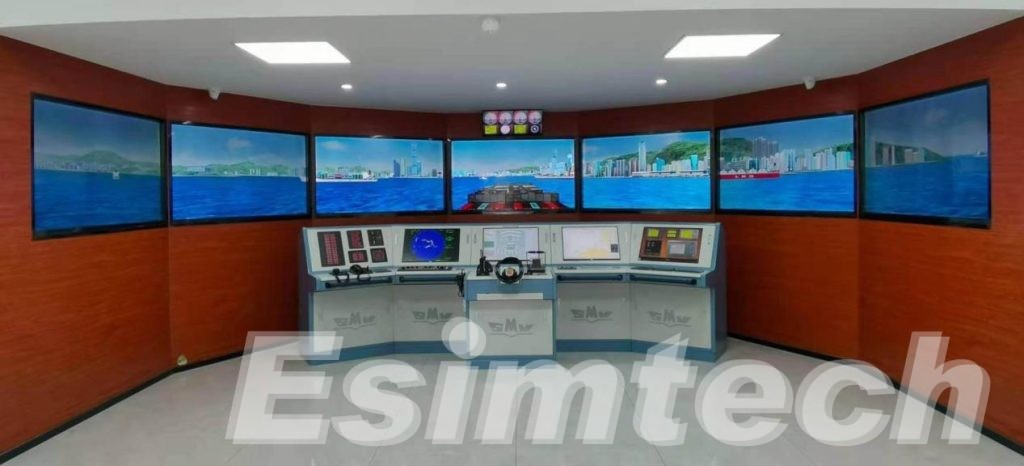
- Data Analytics for Performance Evaluation
In the future, navigation simulators will use more advanced big data analytics to evaluate and improve training results. Systems will capture data on individual responses, the accuracy of maneuvering, and the robustness of communicator and gather trackable comprehensive competency profiles of trainees. Through advanced analytics, instructors and organizations will evaluate data to track training progress and understand growth patterns for training over different time periods and different crews or fleets. Measurable results will ensure data collision avoidance training will adapt as training and learner competencies progress.
- Integration with Autonomous and Smart Ship Systems
In the automation maritime industry, navigation simulators and training simulators for fully autonomous and semi-autonomous vessels are adaptable. New simulation environments will prepare mariners for overseeing autonomous shipping operations, human–machine interaction, and malfunction responses, as well as other maritime tasks. These simulators will also evaluate collision avoidance technology and smart vessels technology. This exercise positions navigation simulators in the human training and technology testing paradigm critical for intelligent maritime systems.
- Enhanced Environmental Modeling and Realism
Advances in simulation technology will continue to prioritize realism. The future of these systems will include more sophisticated models of hydrodynamic interactions, weather systems, and the behavior of vessels. Environmental simulation with AI will incorporate variable and realistic alterations to wind and current geometrics, and to traffic patterns to replicate real maritime uncertainties during training. Improved graphics and sound simulation will provide a more authentic bridge operating experience for trainees.
- Sustainability and Energy-Efficient Training Solutions
As the world focuses more and more on sustainable practices, energy-efficient simulation technology will more rapidly become the norm. The use of virtual training means less fuel will be burned, less emissions will be produced, and fewer vessels will be moved for training exercises. Future simulation technology will need to include modules on eco-navigating so mariners can practice in a safe training environment balancing safe ship handling with responsible environmental practices like fuel-efficient and low-emission ship movement.
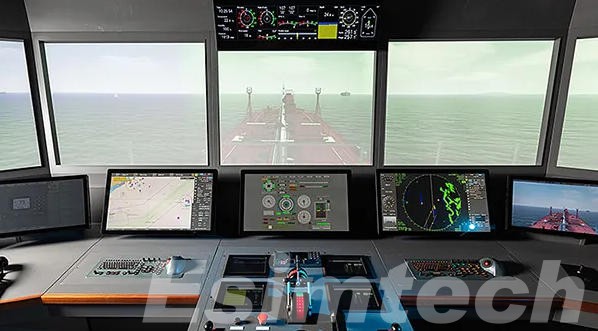
Sum Up
Navigation simulators have reformed the training of mariners and the development and validation of collision avoidance systems. Simulators provide realistic, data-driven and risk-free environments to foster navigation skills, decrease accident rates and promote a safer maritime environment. The enhanced evolution of simulation technology will be vital in pursuing strategies for zero-collision navigation and the integration of autonomous vessels in global maritime transport.
